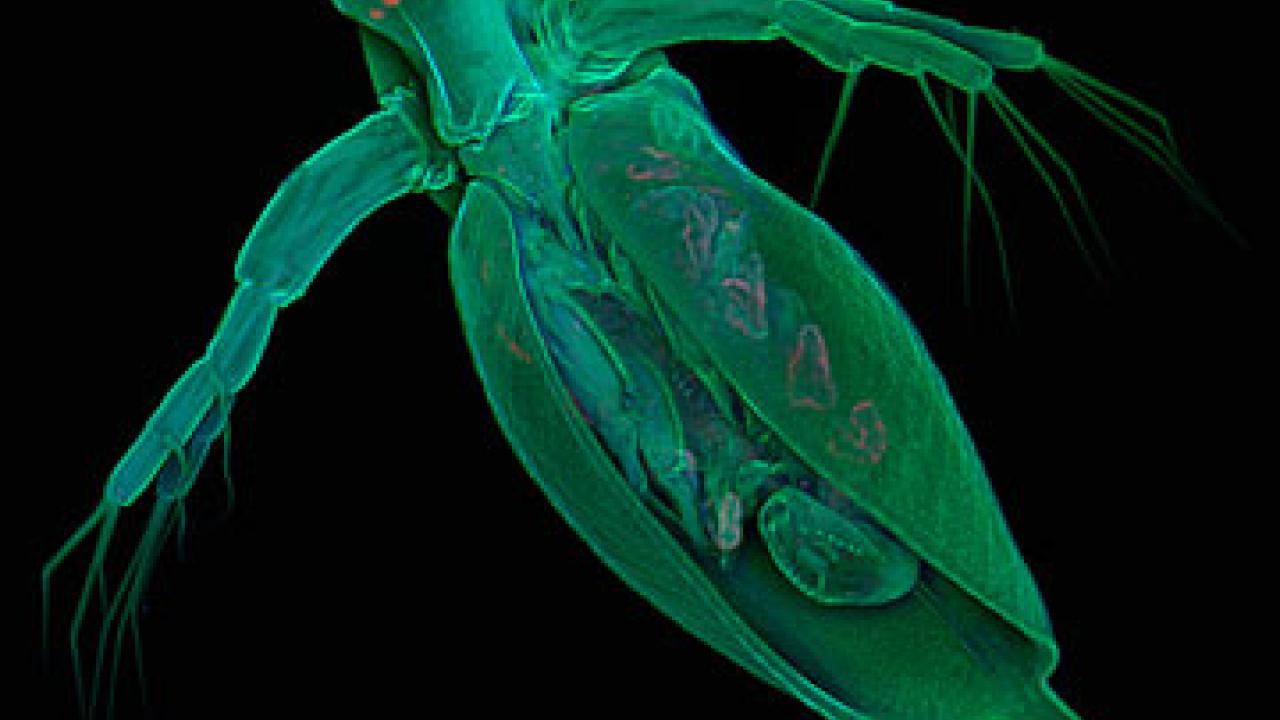The genome of the water flea, Daphnia pulex, has been sequenced by an international team of researchers, including Dietmar Kueltz, professor of animal science at UC Davis. And it turns out to hold a few surprises.
For example: Daphnia has more genes (about 31,000) than any other animal yet sequenced — including humans (about 23,000) — although there are only 200 million base pairs, or "letters" in its genetic code, compared to 3 billion in the human genome. One-third of the genes are completely new to science.
A paper describing the Daphnia genome paper is published Feb. 4 in the journal Science. Kueltz's laboratory helped check the predictions of the number of genes by extracting proteins from Daphnia and working backward to check actual protein sequences against those that were predicted from sequencing the animal's genomic DNA.
Daphnia is creating copies of its genes at a much higher rate than other species, according to project leader John Colbourne, director of the Center for Genomics and Bioinformatics at Indiana University Bloomington.
"We estimate a rate that is three times greater than those of other invertebrates and 30 percent greater than that of human," Colbourne said.
The researchers think that many of these new genes are involved in responding to changes in the animal’s environment. Daphnia are found on every continent including Antarctica and are known to evolve rapidly in response to environmental stress, Kueltz said.
Many diverse, genetically isolated Daphnia populations exist, offering rich opportunities for comparison. In addition, in lake sediments, the water fleas can enter a resting stage in which they can live for more than 100 years, making it possible to conduct "virtual time travel" and compare animals from a century ago with their descendants.
"They are an excellent model for evolutionary genetics and research on mechanisms of speciation," Kueltz said.
Daphnia is the first crustacean, a group that includes lobsters, crabs, shrimp and sow bugs, to have its genome sequenced. It turns out to share more of its genes with humans than with other invertebrates, such as the fruit fly Drosophila.
Daphnia Genomics Consortium projects can be found at http://daphnia.cgb.indiana.edu, as well as a link to the nearly 40 companion papers based on the data reported in the Science paper.
Media Resources
Andy Fell, Research news (emphasis: biological and physical sciences, and engineering), 530-752-4533, ahfell@ucdavis.edu
Dietmar Kueltz, Animal Science, 530-752-2991, dkueltz@ucdavis.edu
